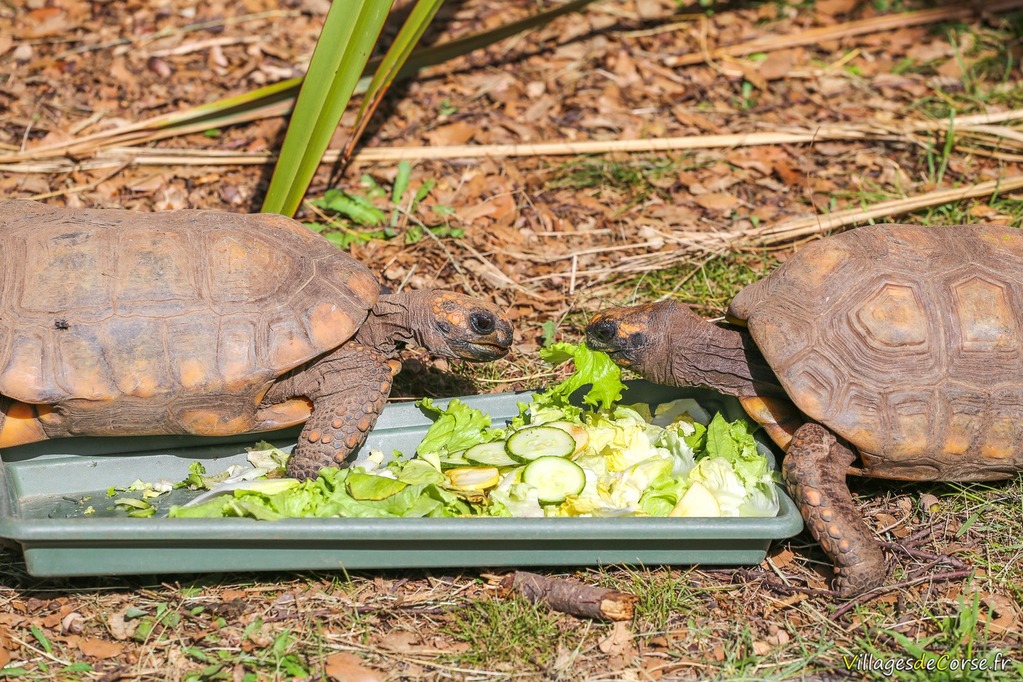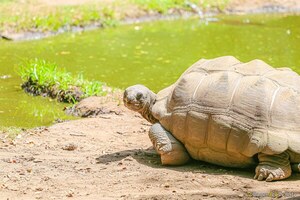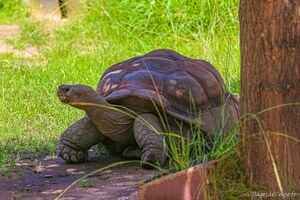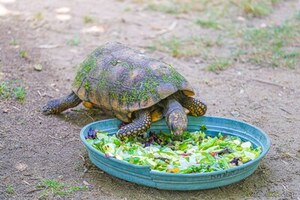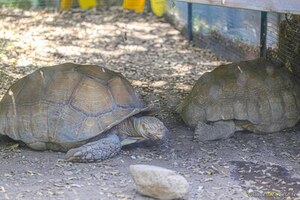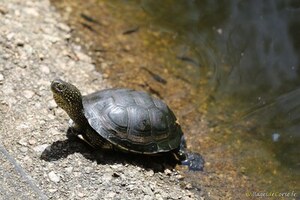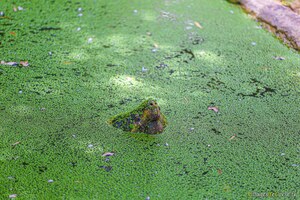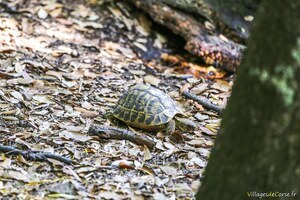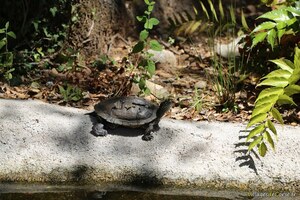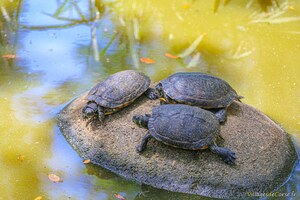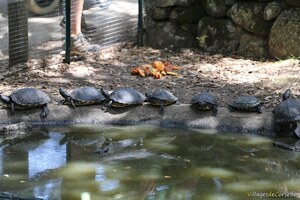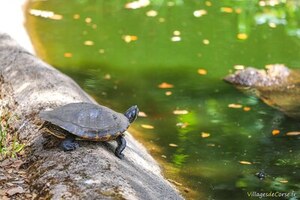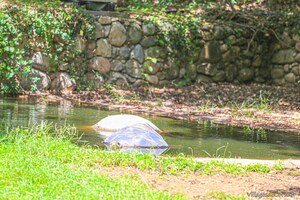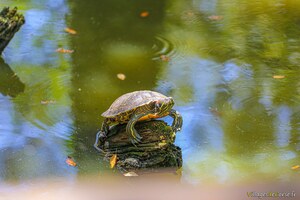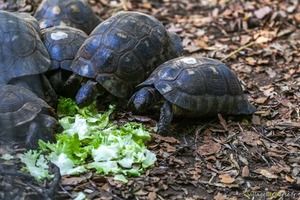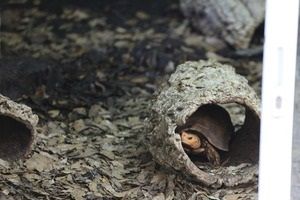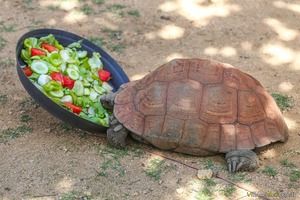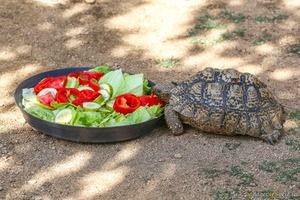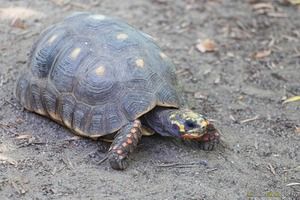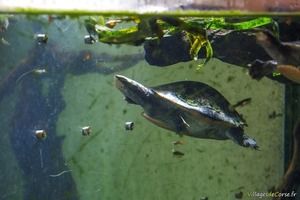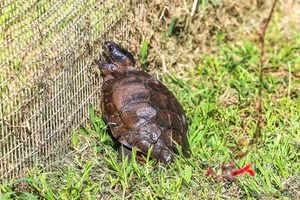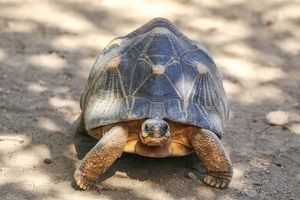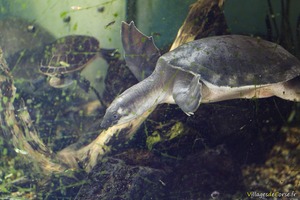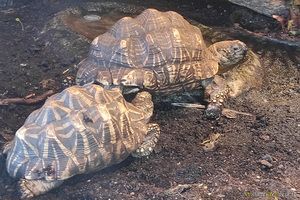- Activities
- Animals
- Zoo
- Southern Spurred Turtle
Southern Spurred Turtle
The Yellow-headed Turtle
Native to the tropical forests of South America, the yellow-headed turtle(Chelonoidis denticulatus) is one of the continent's largest land tortoises. It owes its name to the yellow or orange spots that light up its head and legs. Closely related to the hawksbill turtle, it lives in wetter environments, notably in Amazonia.
Habitat and behavior
This species prefers dense forests and swampy areas where it benefits from high humidity. It is generally active in the morning and at the end of the day, resting in the shade during the hottest hours. Not shy, it moves slowly over long distances in search of food or water.
Diet
Omnivorous with frugivorous tendencies, the Yellow-headed Turtle feeds mainly on fallen fruit, mushrooms, plants and flowers. It also occasionally consumes invertebrates or carrion, playing an important role in cleaning up its ecosystem. It contributes to the spread of seeds in the rainforest.
Reproduction and longevity
Reproduction takes place during the rainy season. The female lays several eggs in a nest she digs in the damp earth. The young take several months to hatch and reach maturity after around ten years. This species can live for more than 60 years in captivity, sometimes up to 80 under the right conditions.
Threats and protection
The Yellow-headed Turtle is threatened by deforestation, hunting and the illegal trade in exotic animals. Its meat is still eaten in some parts of South America. Conservation programs, such as those at Park A Cupulatta, are helping to save the turtle and raise public awareness of the fragility of tropical species.
Click here to discover and visit the A Cupulatta turtle park near Ajaccio.
